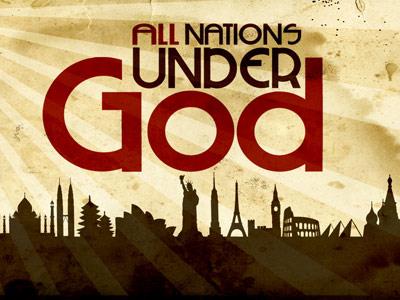-
Jehovah Rophe - God Our Healer Series
Contributed by Paul Basehore on Nov 28, 2017 (message contributor)
Summary: God can heal and restore anything -- from a heavily irradiated forest to the bitterness in your own heart.
Jehovah Rophe - God Our Healer
On Saturday, April 26, 1986, an experiment was under way in the city of Pripyat, Ukraine. This experiment was designed to test how the local nuclear power plant would react following a complete loss of main electrical power. The power plant had 4 nuclear reactors, each of which required 11,800,000 gallons of water per hour to be circulated as coolant. Without electrical power, the coolant pumps would be unable to operate until the backup generators came online, which typically took around a minute. The test was intended to determine if a method they developed to provide temporary power during that minute would actually work.
It didn’t.
At 12:43 AM Moscow Standard Time, Reactor number 4 at the Chernobyl Nuclear Power Station began to overheat. The water -- which was now no longer circulating throughout the plant -- became superheated steam. This rose the temperature of the reactor and caused the power output to increase. This caused more water to turn into steam, starting a chain reaction.
The plant personnel recognized this, so they started an emergency shutdown of the reactor. Shutdown takes 18-20 seconds. However, the method used to emergency shut down a reactor requires the use of graphite rods. Graphite is highly flammable.
I’m sure you can guess what happened next.
As soon as the graphite rods hit the superheated reactor core, they burst into flame. This caused a huge explosion, completely destroying the Reactor 4 building and severely damaging surrounding buildings. At the time of the explosion, the temperature of the core was estimated to be more than 2200 degrees fahrenheit. This was hot enough to melt the graphite, causing radioactive lava flows to enter the plumbing of the reactor and further irradiate the building.
The first responders to the explosion received approximately 6,000 millisieverts of radiation. To put things in perspective, the amount of radiation a person absorbs from a normal X-Ray is 0.1 millisieverts. These firemen, soldiers, and medical personnel died of radiation poisoning within a few weeks. The poor quality of photographs from the cleanup has nothing to do with the technology of the time -- the high radiation levels literally ruined the film.
The explosion shot radioactive material around 100,000 square kilometers in area, causing heavy, black-colored rain to fall. Estimates in the Ukraine and surrounding countries indicate that over one million people could have been affected by the radiation.
In response, the Soviet Government evacuated everyone in a 2600 kilometer area, completely abandoning the city of Pripyat and other nearby towns in two countries. They called this the “Chernobyl Exclusion Zone”. Surprisingly, the other three reactors were still operational after the explosion, so the government would bus workers in and out of the Zone until the year 2000, when the plant was finally completely shut down for good.
The Chernobyl accident is considered the worst man-made nuclear accident in history. We learned a lot from Chernobyl, but one thing that happened as a result of the creation of the Zone that no one expected.
Wildlife flourished. In 2014, for the first time in centuries, European Brown Bears were found in the Zone, living normally with no obvious effects from the radiation. Scientists have no idea how they even got there. A herd of Przewalski’s (sheh-VAL-sky’s) Horses, an endangered subspecies of horse thought to be extinct in the wild, was found. Lynx, deer, boars, cranes, and other wild animals have thrived in the Exclusion Zone, surviving with little to no mutations from the high radiation. This is amazing! Scientists from all over the world are risking the radiation to study the animals living in the Chernobyl Exclusion Zone, wondering why and how they’re surviving so well despite the fact that the ground, their food, and literally even the air they breathe is poisonous.
The Chernobyl accident, and especially the wildlife living in the Exclusion Zone, reminds me of another of God’s names. Two weeks ago we started with Jehovah, which means “I AM.” Last week we discussed Jehovah Jireh, which means “God Our Provider”. Tonight we will talk about Jehovah Rophe, or “God Our Healer”. Turn with me to the book of Exodus, chapter 15, verses 22 - 26. The Israelites had just walked out of the Red Sea and celebrated their escape from Egypt.
“22Then Moses led Israel from the Red Sea and they went into the Desert of Shur. For three days they traveled in the desert without finding water. 23When they came to Marah, they could not drink its water because it was bitter. (That is why the place is called Marah.) 24So the people grumbled against Moses, saying, “What are we to drink?”
25Then Moses cried out to the Lord, and the Lord showed him a piece of wood. He threw it into the water, and the water became fit to drink.

 Sermon Central
Sermon Central



